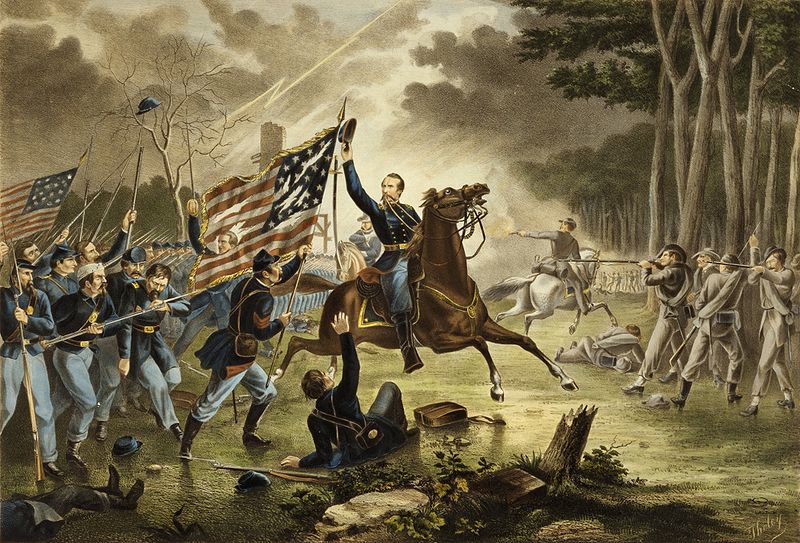Confederate General Robert E. Lee, having defeated the Union Army of Virginia, commanded by US General John Pope at Second Manassas, now sought to cut off its retreat to Washington, DC.
Despite the significant victory at Manassas, the Union army did manage to retreat to the high ground of Centreville, where the army rested on 31 August, the day after the battle ended.
Lee thought that it might be possible for Stonewall Jackson and his hard marching Confederate Corps might be able to march to the north and then to the east and cut off the Union army at Centreville.

This sign at Chantilly (Ox Hill) Battlefield shows the flanking route of Stonewall Jackson. Click here for a larger version of the map, and infomation on its location: http://www.hmdb.org/Marker.asp?Marker=15618
The weather did not favor the Southern cause. Rain slowed the progress of Jackson and his exhausted troops. Jackson had to march due north from the battlefield to the point of modern highway US50, then turn east marching to West Ox Road. Pope and his Union troops only had to march down what is now US29 to the same junction -- the difference between 5 miles and 18 miles.

This is the Civil War Trails sign for the Battle of Chantilly (Ox Hill). The full text, and location of the sign can be found here: http://www.hmdb.org/Marker.asp?Marker=116
On 1 September 1862, the two sides clashed at the Battle of Chantilly (Ox Hill), where two Union divisions, that of US General Philip Kearny and General Isaac Stevens, blocked Stonewall Jackson's Corps. Despite the casualities of Second Manassas, no General died on that field of battle -- but at Chantilly, both Kearny and Stevens lost their lives.

General Kearny's Gallant Charge by Tholey, ca. 1867
In the end, however, the battle meant that Stonewall Jackson was too late, and the defeated Union army would be able to withdraw to the defenses of Washington, DC.
Here is the NPS account of the battle: http://www.nps.gov/history/hps/abpp/battles/va027.htm
There US General John Pope would be relieved of command, with US General George B. McClellan, of the Union Army of the Potomac taking charge of all Union forces in the region.
Confederate General Robert E. Lee, however, was ready to move his force north of the Potomac for the first invasion into Maryland...
Fairfax County, Virginia, has actually preserved the core area of the battlefield in a county park: http://www.fairfaxcounty.gov/parks/oxhill/
Live well!
No comments:
Post a Comment